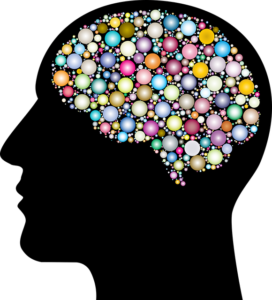 Defense, health, finance, industry… Few sectors today have not taken the plunge into artificial intelligence (AI). More than an option that businesses can benefit from, this technology represents endless possibilities and impressive development potential for years to come. A valuable tool that increases its capabilities tenfold in contact with Big Data . So, what are the advantages and the limitations? What business challenges arise from the combination of Big Data and artificial intelligence?
Defense, health, finance, industry… Few sectors today have not taken the plunge into artificial intelligence (AI). More than an option that businesses can benefit from, this technology represents endless possibilities and impressive development potential for years to come. A valuable tool that increases its capabilities tenfold in contact with Big Data . So, what are the advantages and the limitations? What business challenges arise from the combination of Big Data and artificial intelligence?
Using AI and Big Data: A Real Business Challenge
From logistics to accounting, including human resources, AI finds its place at the heart of all services. The principle is to combine data and intelligent machines to increase the company’s overall performance. Several levels of the company and areas of activity can benefit from this.
Big Data and AI for Cybersecurity
Detect suspicious behavior, update antiviruses, recognize users using their voice, identify spam… Faced with increasing threats, AI has a vital role to play: helping companies neutralize malicious acts while protecting their sensitive data. By analyzing millions of computer attacks and spotting patterns, artificial intelligence manages to identify new processes developed by online criminals and, therefore, thwart them.
In the era of GDPR, ensuring the protection and security of data has become essential.
Big Data and AI for its customer strategy
Large group or small structure, every company builds its strategy around a central element: the customer. What is the mission of Big Data combined with AI? Know your ideal buyer like the back of your hand to adapt your products and services then. Depending on the information collected (purchasing behavior, expectations, motivations, questions, etc.), brands are able to personalize marketing campaigns, improve the online journey, or even perfect their after-sales service.
Big Data and AI in the Financial Sector
For businesses, creating accurate forecasts continues to be a significant challenge. Thanks to AI and Big Data, the implementation of solid indicators makes it possible to generate volume forecasts, better manage stocks, and, therefore, make informed decisions regarding budget allocation. In short, allocate the right resources to the correct position at the right time.
Whatever an organization’s primary activity, it can benefit from the advantages of Big Data and artificial intelligence to be more efficient in its market and internal operations. These technologies are proving to be levers of performance and growth for years to come.
The challenges linked to Big Data and AI
Most businesses are aware of how crucial data is to maximizing their operations, particularly when it comes to making strategic conclusions. This business approach is called business intelligence and consists of placing big data and all services’ data at the heart of the business process to make informed, logical, and relevant choices.
 However, if they say they are ready to embark on the adventure of AI, reality often seems to catch up with them. Why is there such a gap between leaders’ intentions and reality? This gap can be explained by various obstacles that companies face.
However, if they say they are ready to embark on the adventure of AI, reality often seems to catch up with them. Why is there such a gap between leaders’ intentions and reality? This gap can be explained by various obstacles that companies face.
Indeed, implementing AI in your organization requires a certain number of financial and human resources, which companies do not always have. Among them, we find:
The financial aspect: the development and implementation of AI requires significant investments. Large sums, which companies are only sometimes able to pay. Lack of visibility, fear of losing profitability… Organizations remain cautious about artificial intelligence and machine learning. Solutions exist to finance R&D, but they are likely to have an impact on the price of the products, an additional cost that the consumer is not necessarily ready to accept.
The psychological aspect is loss of bearing, lack of confidence in algorithms, fear of working with erroneous data, and fear of destroying jobs… Deprived of information, some companies are wary of AI and Big Data and prefer to stand back or wait for intelligent technologies to evolve further.
The human aspect: without qualified employees, no automation is possible. Despite a desire to reproduce so-called “intelligent” behavior, human action remains essential in the functioning of AI. A way of working that can sometimes confuse employees! It is, therefore, imperative to support employees in this change. The critical step is to recruit specialized profiles and train workers to enable them to acquire the reflexes and skills necessary for this transition.
…
 To understand how complementary these two systems are, it is necessary to return to the definition of AI. In a broad sense, artificial intelligence refers to all technologies capable of reproducing the analytical capabilities of a human being. To do this, the machine must integrate a large quantity of data to learn, correct itself, and internalize the suitable algorithmic models adapted to the situations it encounters.
To understand how complementary these two systems are, it is necessary to return to the definition of AI. In a broad sense, artificial intelligence refers to all technologies capable of reproducing the analytical capabilities of a human being. To do this, the machine must integrate a large quantity of data to learn, correct itself, and internalize the suitable algorithmic models adapted to the situations it encounters. No strict schema governs the handling or storing of semi-structured data. It needs to be in relational format and neatly organized into rows and columns like a spreadsheet. However, some features, like key-value pairs, help distinguish the different entities from each other.
No strict schema governs the handling or storing of semi-structured data. It needs to be in relational format and neatly organized into rows and columns like a spreadsheet. However, some features, like key-value pairs, help distinguish the different entities from each other.